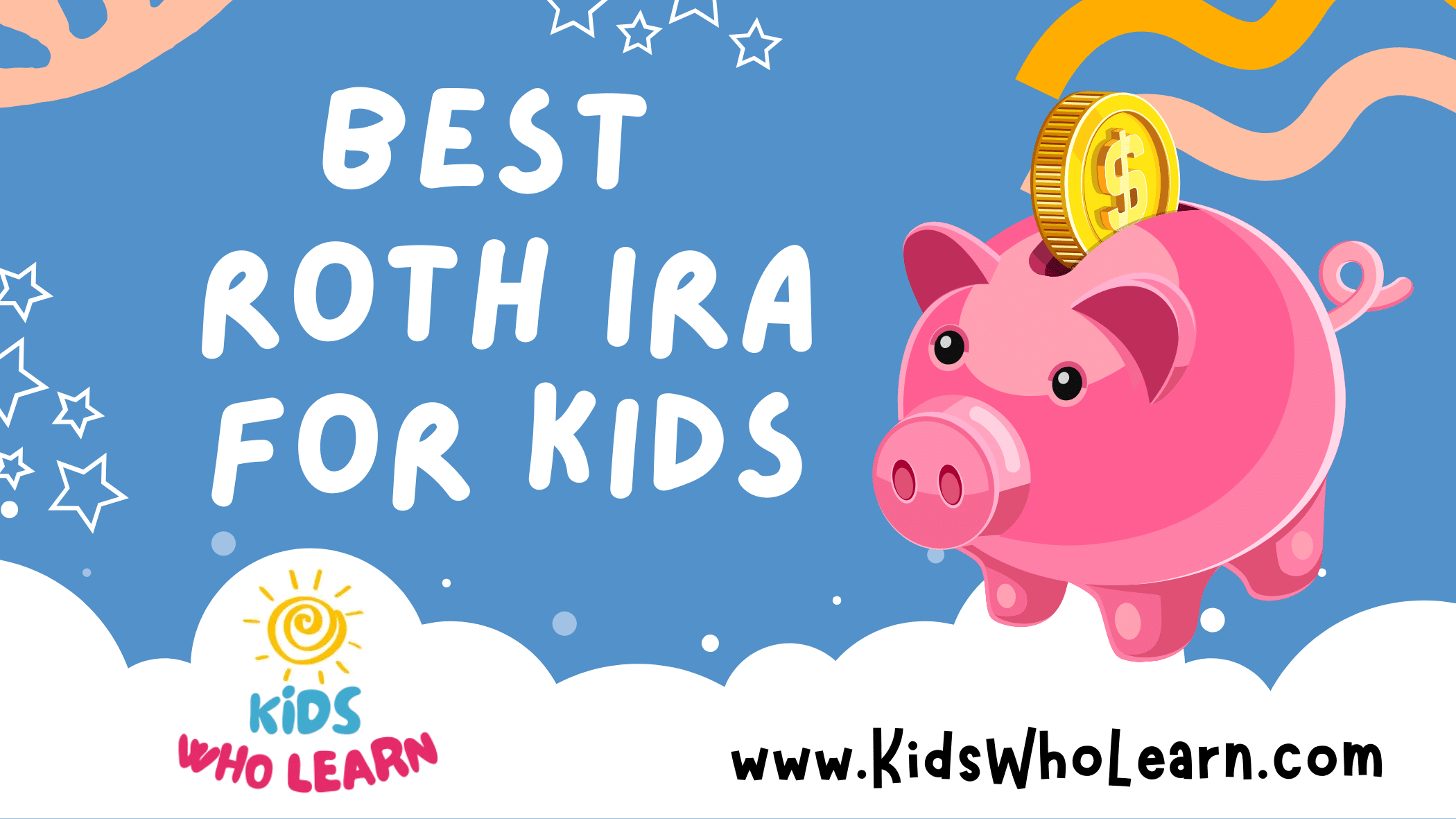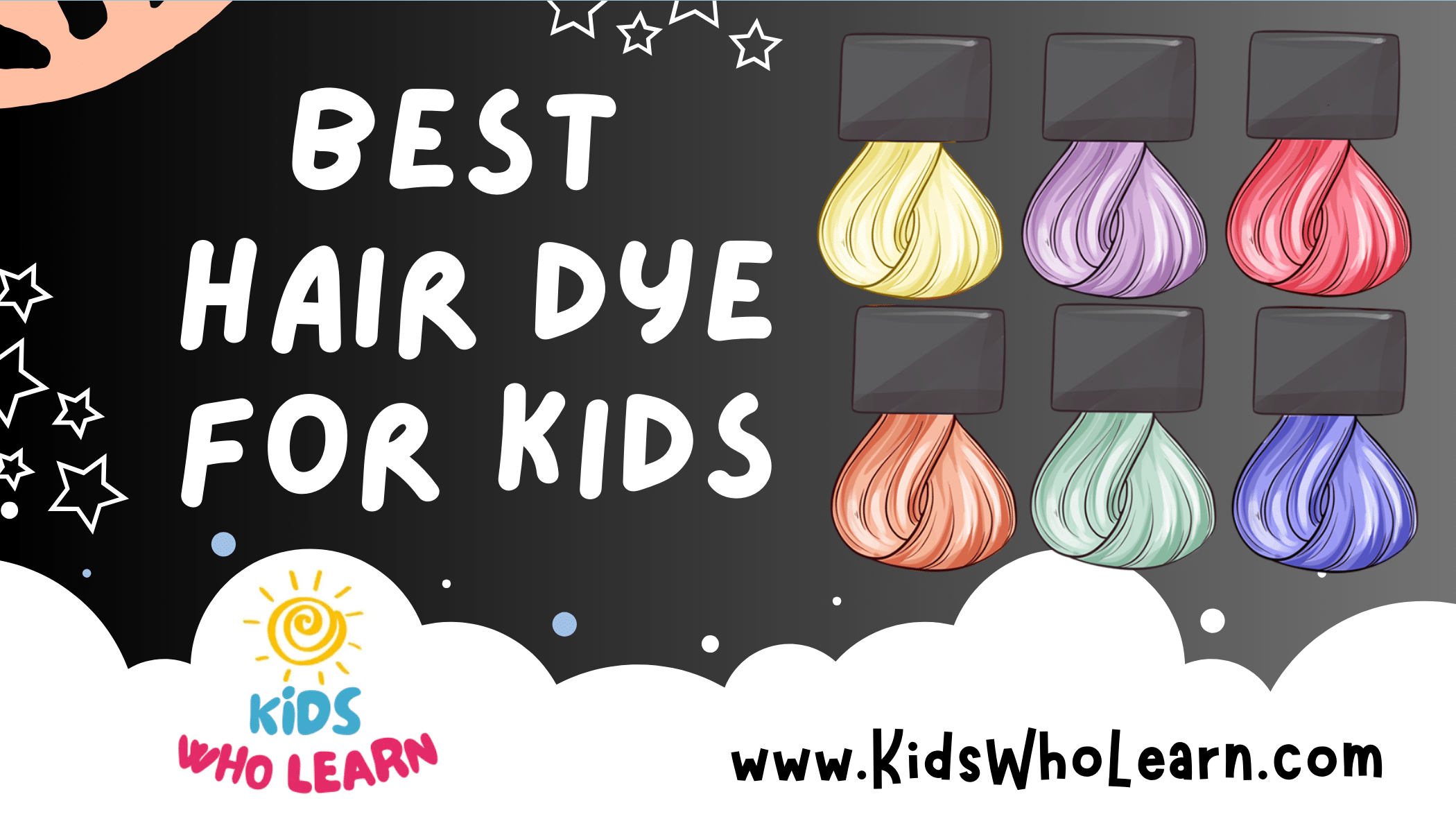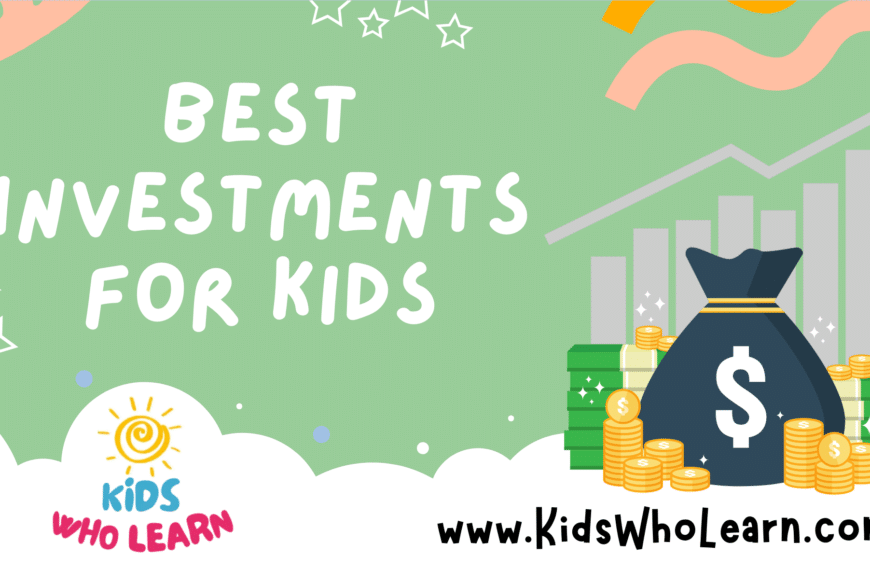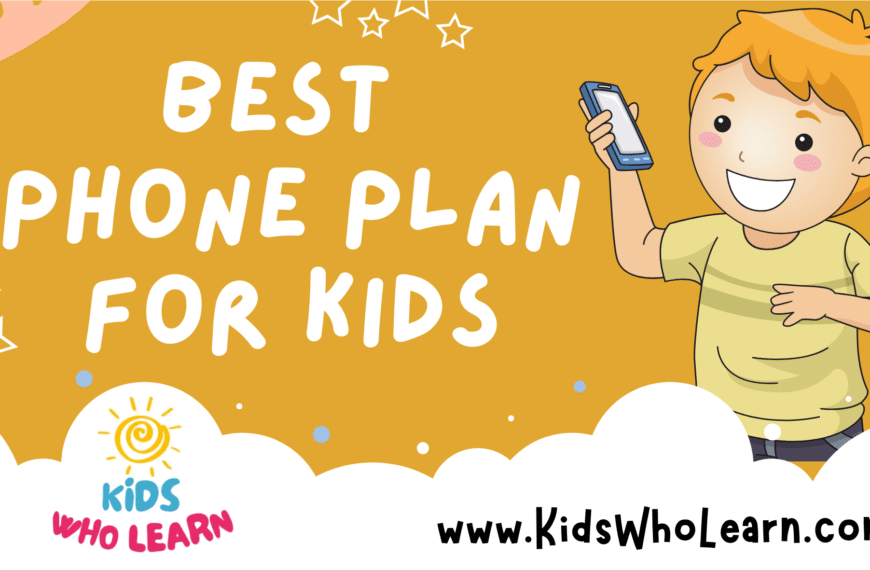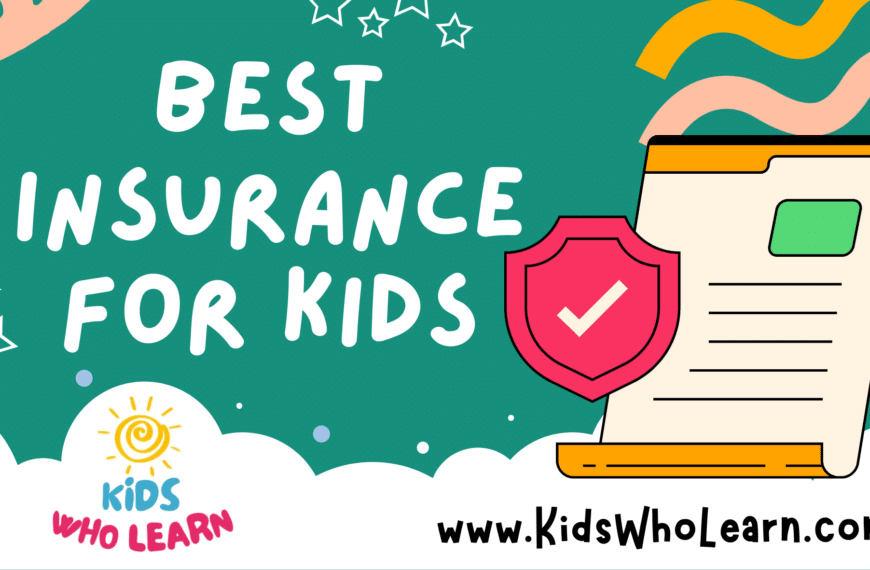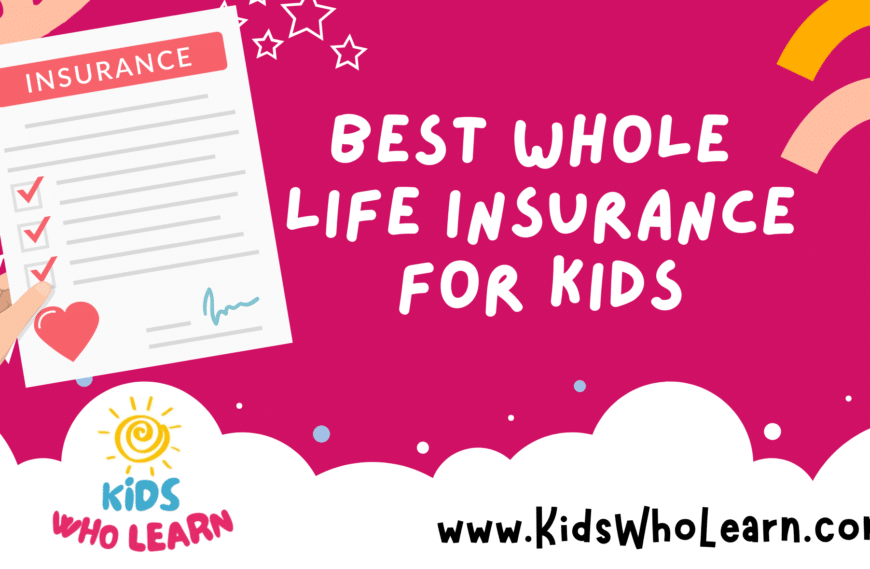Investing early in a Roth IRA for kids can establish a foundation for sound financial habits and long-term growth. A Roth IRA designed for minors, often known as a Custodial Roth IRA, allows parents and guardians to open an account on behalf of their children, permitting the youngsters to take advantage of tax-free growth on their investments. The idea is to provide a financial tool that benefits the child well into adulthood, harnessing the power of compound interest over decades.
To open a Roth IRA for your child, they must have earned income from a job or self-employment. This requirement ensures that the contributions made to the account are eligible under the Internal Revenue Code. Once your child’s Roth IRA is established, the contributions can be invested in a wide range of options, including stocks, bonds, and mutual funds, depending on the risk tolerance and investment goals. Furthermore, the tax-free withdrawals after age 59½ and the ability to withdraw contributions at any time without penalty, add to the flexibility of the Roth IRA.
Key Takeaways
- A Custodial Roth IRA offers tax-free growth potential for a child’s long-term savings.
- A child must have earned income to contribute to a Roth IRA, and these contributions can grow tax-free.
- Withdrawals from a Roth IRA can be made tax-free after a certain age, with contributions being withdrawable at any time without penalty.
Understanding Roth IRAs for Kids
A Roth IRA for kids is a powerful tool for early financial education and long-term wealth building. With a custodial Roth IRA, you can begin securing your child’s financial future today.
What Is a Roth IRA?
A Roth IRA is a type of Individual Retirement Account that allows after-tax contributions to grow tax-free. Unlike traditional IRAs, withdrawals from a Roth IRA are not taxed if certain conditions are met. For children, a custodial Roth IRA operates under the same tax rules, but it is managed by an adult until the child reaches adulthood.
Eligibility:
- Income: Must have earned income.
- Age: No minimum age, but must have employment compensation.
| Contributions | Taxes on Contributions | Taxes on Withdrawals |
|---|---|---|
| After-tax | Not Tax Deductible | Tax-free* |
*Withdrawals are tax-free, assuming the account has been open for at least 5 years and the withdrawal is made after age 59½, or for qualified exceptions.
Benefits of a Roth IRA for Kids
Compound Growth: The earlier one starts investing in a Roth IRA, the more potential for compound growth. Contributions made in a child’s early years can significantly multiply by the time of retirement due to the compound interest.
Flexibility: The Roth IRA offers flexibility for non-retirement related withdrawals. Contributions can be withdrawn tax-free and penalty-free at any time, for any reason. This could fund educational expenses or be an early down payment on a house.
Educational Tool: Engaging children with their Roth IRA helps teach personal finance and the importance of saving and investing for the future. It instills valuable financial habits at an early age.
Tax-Free Withdrawals: In retirement, withdrawals are tax-free, offering your child a source of income that does not contribute to their tax burden in retirement years.
Informing yourself about the benefits and structures of a Roth IRA for kids positions you to offer them a considerable advantage as they approach their working and retirement years. Investing in a Roth IRA for kids supports their financial understanding and growth as they transition into adulthood, ensuring that they value and continue contributing to their retirement savings.
Eligibility and Requirements
When considering a Roth IRA for kids, it’s essential to understand the specific eligibility criteria and contribution rules. Your child’s ability to open and contribute to a Roth IRA hinges on their earned income and adherence to age-related guidelines.
Age Restrictions and Legal Adulthood
There is no minimum age to open a Roth IRA. However, the minor must have earned income within the tax year. Babysitting, for example, can count as earned income. Once your child reaches the age of legal adulthood, they will assume control over the account. Legal adulthood varies by state, typically age 18 or 21.
- Earned Income Requirement: Must have legitimate earned income for the year of contribution.
- Age of Legal Adulthood: Varies by state; usually 18 or 21.
Earned Income and Contribution Limits
Your child can only contribute to a Roth IRA up to the limit of their earned income or the annual contribution limit set by the IRS, whichever is less. For 2023, the maximum contribution limit is $6,500.
- Maximum Contribution for 2023: $6,500
- Contribution Cap: Lesser of earned income for the year or $6,500.
Before making a contribution, ensure your child has a Social Security number, which is required to open a Roth IRA. Note that earned income includes wages, salaries, tips, and other taxable employee pay, not just money from occasional jobs like babysitting.
How to Open a Roth IRA for Your Child
To secure your child’s financial future, a Roth IRA is a beneficial tool, provided that they have earned income. This account offers tax-free growth and tax-free withdrawals in retirement. Here’s how to set one up efficiently:
Choosing the Right Custodian
When opening a Roth IRA for your child, your first step is to select a custodian. The custodian is a financial institution—often a bank or brokerage—that administers the IRA’s investments. With various custodians available, it’s crucial to compare:
- Fees: Some custodians charge maintenance or transaction fees. Look for low-fee options.
- Investment Choices: Diverse investment options like stocks, bonds, and mutual funds will give your child’s account more opportunities to grow.
- Minimum Investment Requirements: Check if there’s a minimum amount required to start the account.
It’s also wise to opt for custodians that cater specifically to custodial accounts, as these are designed to be managed by a parent or legal guardian until the child reaches adulthood.
Setting Up the Account
Once you choose a custodian, you’ll proceed to set up the custodial Roth IRA. Here are the steps to get started:
- Gather Required Information: You will need your child’s Social Security number and birth date, along with your own personal information.
- Submit an Application: Applications can typically be completed online through the chosen brokerage or custodian’s website.
- Fund the Account: You can fund your child’s investment account with cash or a check, and remember, contributions are limited to the amount of your child’s earned income for the year.
- Select Investments: Decide together with your child, where to invest the money within the IRA. This could be individual stocks, bonds, mutual funds, or exchange-traded funds (ETFs).
It’s important that you regularly review the account performance and make adjustments with your child as they grow and learn about investing.
Contributions and Investment Choices
When setting up a Roth IRA for your child, understanding the rules surrounding contributions and the breadth of investment choices available is crucial for maximizing potential growth.
Making Contributions to the Roth IRA
You can contribute to a Roth IRA for your child as long as they have earned income. This includes income from self-employment, such as a lawn mowing business or babysitting. For 2023, the maximum contribution is the lesser of your child’s earned income or $6,000. Contributions are made with after-tax dollars, meaning they’re not tax-deductible, but qualified withdrawals are tax-free, fostering tax-free investment growth.
Contribution Limits for 2023:
- Maximum Contribution: $6,000
- Contribution Criteria: Must be less than or equal to the child’s earned income
Investment Options Within the Roth IRA
Your child’s Roth IRA offers a wealth of investment options. Your strategy should align with your child’s time horizon and risk tolerance. Consider diversified investment options like index funds and exchange-traded funds (ETFs), which can offer exposure to a broad range of assets including stocks and bonds.
Investment Choices Include:
- Funds: Diversified investments often preferred for long-term growth; include mutual funds and target-date funds.
- Index Funds: Track specific indexes like the S&P 500, making them a cost-effective choice due to lower expense ratios.
- Exchange-Traded Funds (ETFs): Similar to index funds but can be traded like stocks, offering flexibility and often lower investment minimums.
Tax Advantages and Considerations
When you invest in a Roth IRA for kids, your contributions grow tax-free, which can compound over time into significant savings. Withdrawals are also tax-free if they meet certain conditions.
Understanding Tax-Free Growth
By choosing a Roth IRA for kids, you benefit from the principle of tax-free growth. This means that any gains your investments make will not be subject to tax as long as they remain in the account.
- Compounding: Since you aren’t taxed on investment gains each year, the money you would have paid in taxes continues to earn more money, leading to compound growth.
- Contributions: Although contributions are made with after-tax dollars, meaning you don’t get a tax deduction when you contribute, the advantage comes when you or your child are ready to withdraw funds.
Withdrawals and Qualified Distributions
Withdrawals from a Roth IRA for kids can be made tax-free and penalty-free under certain conditions known as qualified distributions.
- Age and Timing: Withdrawals are qualified when the account has been held for at least five years and the child reaches age 59½.
- Non-Qualified Distributions: Should you need to withdraw earnings before fulfilling these conditions, you may be subject to taxes at your current income tax bracket and a 10% penalty.
- Contributions Withdrawals: You can withdraw the amount you contributed (but not the earnings on those contributions) at any time, tax-free and penalty-free. This flexibility can be beneficial if funds are needed for education or other important life events.
Using Roth IRA Funds
When it comes to Roth IRAs for kids, it’s essential to understand the specific conditions where withdrawals are both allowed and advantageous. Your knowledge of these rules can maximize the tax benefits of the account.
Educational Expenses and First-Time Home Purchase
When you use Roth IRA funds for educational expenses, you’re tapping into a tax-advantaged resource. Here’s what you need to know:
- Qualified Education Expenses: Funds can be used for college expenses like tuition, books, supplies, and sometimes room and board, providing the student is enrolled at least half-time.
- First-Time Home Purchase: Up to $10,000 can be withdrawn penalty-free to buy, build, or rebuild a first-time home for yourself, your spouse, or even your children or grandchildren.
Remember, while contributions can be withdrawn at any time tax- and penalty-free, earnings are subject to different rules based on age and the five-year rule.
Penalty-Free Withdrawals and Exceptions
Exploring penalty-free withdrawals and exceptions is crucial:
- Age 59 ½ Rule: Withdrawals from your Roth IRA are generally tax- and penalty-free if you’re over 59½ years old and the account has been open for at least five years.
- Exceptions: If under age 59½, there are certain circumstances where you can make penalty-free withdrawals on earnings, such as disability or qualifying distribution reasons mentioned earlier.
| Penalty-Free Exceptions for Under 59 ½ | Conditions |
|---|---|
| Disability | As defined by IRS guidelines |
| First-Time Home Purchase | Limited to $10,000 in earnings |
| Unreimbursed Medical Expenses | Exceeding 7.5% of adjusted gross income |
| Health Insurance | If unemployed for 12 weeks or longer |
To ensure these withdrawals remain tax-advantaged, follow the specific rules that apply to each condition.
Financial Planning for the Future
As you embark on the journey of securing your child’s financial independence, it’s critical to incorporate strategies for retirement savings and generational wealth transfer from the outset. Professional guidance can help optimize these efforts for your family’s unique situation.
Building Retirement Savings and Generational Wealth
Establishing a Roth IRA for your child not only initiates a habit of savings but also provides a tax-advantaged vehicle for retirement funds that can grow tax-free.
- Early Contributions: Starting early can take advantage of compound interest, significantly increasing the account balance by retirement age.
- Regular Investments: Consistency is key, even with small amounts. Regular contributions can lead to substantial long-term growth.
- Investment Choices: Being selective with investments within the Roth IRA can influence the risk and return profile, and therefore the ultimate size of the retirement nest egg.
By focusing on these strategies, you’re not just preparing for your child’s retirement, but also setting a foundation for generational wealth. This wealth can secure their future and provide financial stability for subsequent generations.
Guidance from Financial Advisors and Tax Professionals
Navigating the complexities of retirement planning and tax efficiency calls for expertise.
- Financial Advisors: They assess your overall financial position and help tailor a retirement saving strategy to meet your child’s future needs. Advisors can suggest the best investment options within the Roth IRA to ensure it aligns with your child’s long-term goals and risk tolerance.
- Tax Professionals: These experts will ensure you’re maximizing tax benefits associated with a Roth IRA for your child. They can also advise on contribution limits and potential tax implications for both you and your child.
By engaging with financial advisors and tax professionals, you’re leveraging their expertise to provide your child with a robust financial foundation and a clearer path to a secure retirement.
Risks and Considerations
When considering a Roth IRA for kids, it’s crucial to understand the investment risks involved and the importance of adhering to tax laws to avoid penalties.
Understanding Investment Risks
Investing in a Roth IRA comes with inherent risks, including market volatility and the potential for loss of principal. As you’re investing for your child’s future, it’s essential to choose investments that match your risk tolerance and long-term objectives. Be aware of:
- Commissions & Expenses: While some Roth IRAs offer low-cost options, others may charge commissions or higher expenses, which can erode investment returns.
- Active Trading: Engaging in active trading within a Roth IRA can increase your risk and potentially lead to significant losses, especially considering the long-term nature of retirement investments.
Compliance with Tax Laws and Penalties
Your Roth IRA for kids must comply with tax laws to avoid penalties. It’s your responsibility to ensure:
- Accuracy: All contributions and withdrawals are accurately reported to the IRS.
- Liability: You are aware of the tax implications for contributions and earnings.
- Penalty Avoidance: Withdrawals made before age 59 ½ may be subject to taxes and a 10% penalty, with certain exceptions.
| Compliance Concerns | Your Actions & Awareness Required |
|---|---|
| Contribution Limits | Do not exceed the annual contribution limit. |
| Withdrawal Rules | Understand rules to avoid taxes and penalties. |
| Tax Reporting | Report contributions and withdrawals accurately. |
Maintain a clear record of all transactions and stay informed about the evolving tax regulations to prevent potential legal and financial repercussions.
Frequently Asked Questions
This section aims to clarify common queries regarding custodial Roth IRAs for children, encompassing initial setup steps, income documentation, regulations, provider comparisons, potential disadvantages, and the overall benefits for a child’s financial future.
What steps are necessary to open a custodial Roth IRA for a child?
To open a custodial Roth IRA for your child, you’ll need to choose a financial institution that offers custodial Roth IRA accounts, provide the necessary documentation to verify your child’s identity and earned income, and complete the account application process in your name as the custodian with the child as the beneficiary.
How can I document my child’s earned income for the purpose of contributing to a Roth IRA?
You must gather documentation that confirms your child’s earned income, such as pay stubs from employment or a statement of earnings if the income is from self-employment. This proof is required to make contributions to a Roth IRA on their behalf.
What are the key regulations governing custodial Roth IRA accounts?
Custodial Roth IRAs are governed by regulations that limit annual contributions based on the child’s earned income, with contributions not exceeding the lesser of that income or the current year’s maximum limit. The account remains under custodial control until the child reaches the age of majority.
Which Roth IRA provider offers the best services for minors, specifically for those who are 18 years old?
Selecting the best Roth IRA provider for minors, especially 18-year-olds, involves comparing account fees, investment options, educational resources, and customer service. Firms like Charles Schwab and Vanguard are often noted for their robust services designed for young investors.
Can you outline the potential disadvantages of opting for a Roth IRA as a savings strategy for children?
One potential disadvantage of a Roth IRA for children is that the funds are intended for retirement, meaning early withdrawals may incur penalties and taxes, and could diminish the long-term growth potential of the investment. Additionally, the use of these funds for education or other expenses requires careful planning to avoid financial drawbacks.
Is setting up a custodial Roth IRA a beneficial way to invest in a child’s future financial stability?
Establishing a custodial Roth IRA can be a strategic way to invest in your child’s financial future, providing tax-free growth and withdrawals after age 59 ½. It also teaches valuable lessons about saving and investing from an early age. However, it’s important to weigh this option against other education and savings vehicles.

